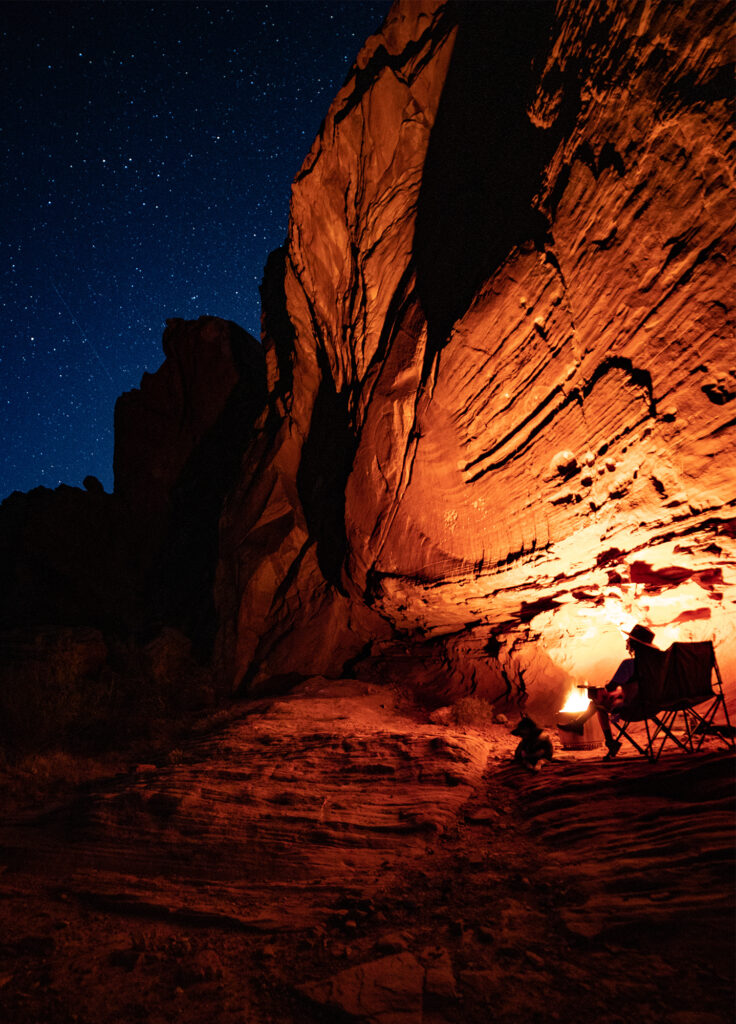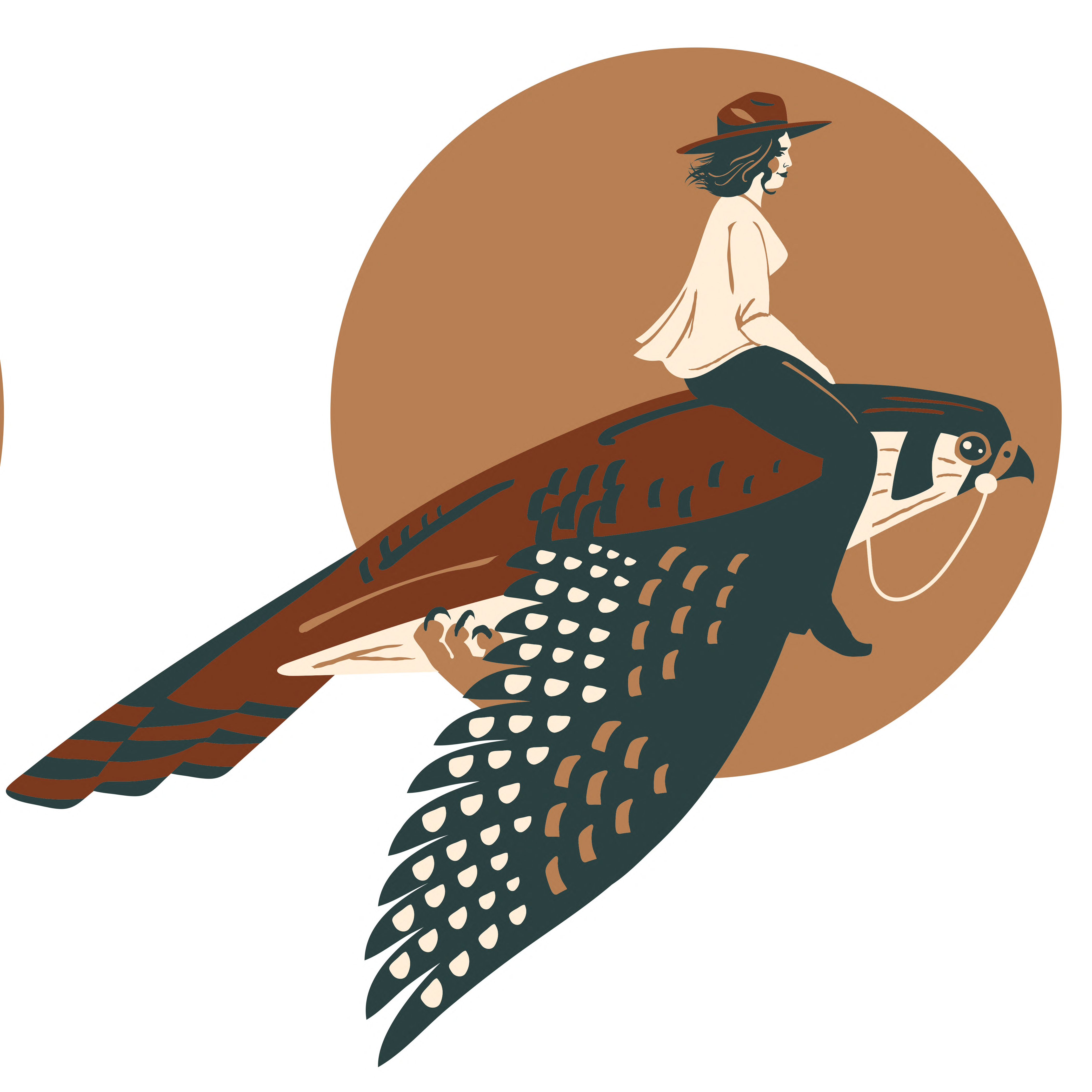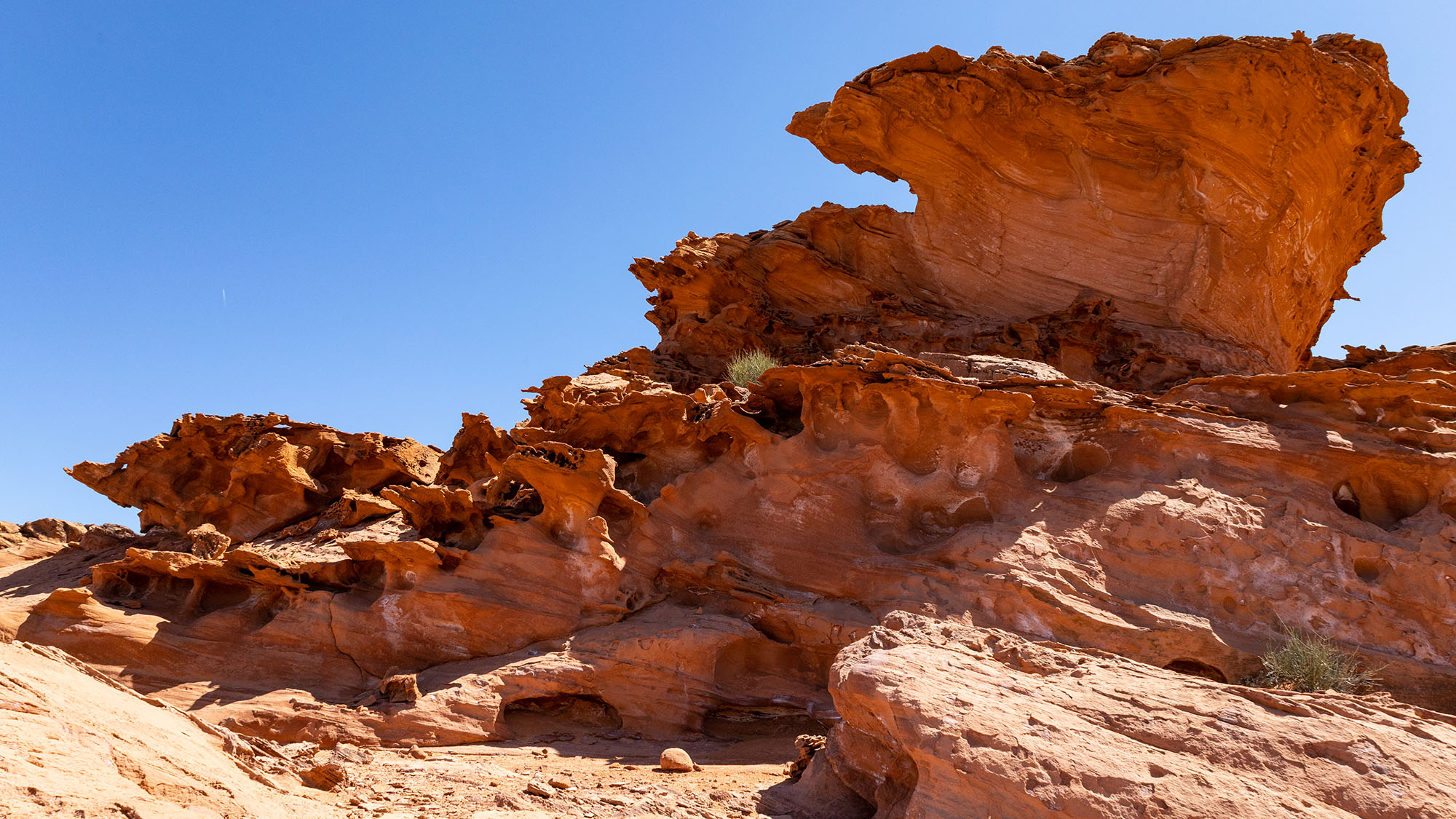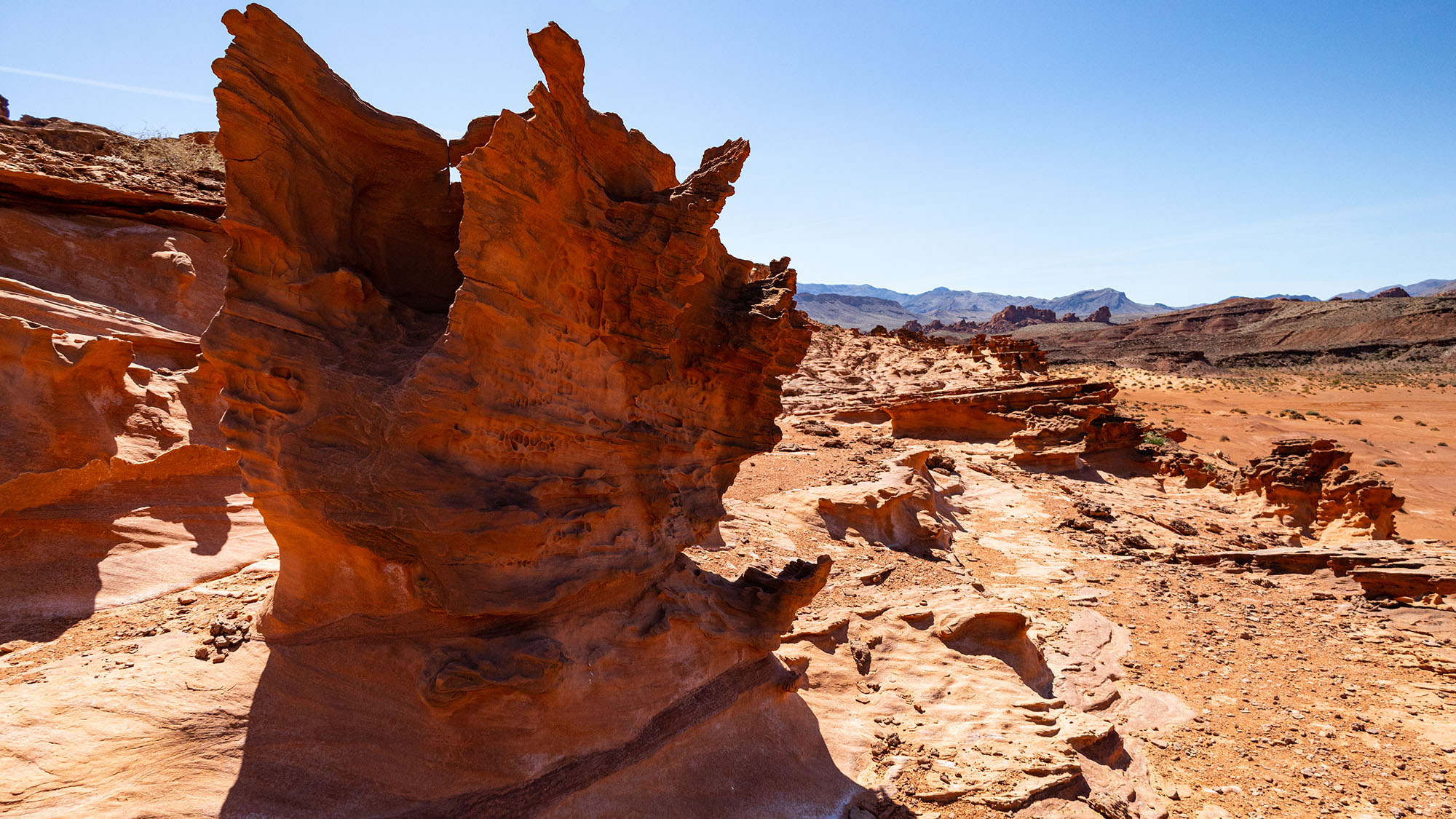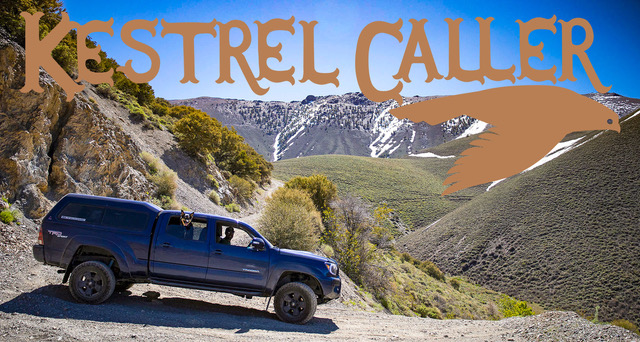You ever had one of those trips you can’t stop thinking about? The type of excursion where you know are incredible as they’re happening, but are far more powerful once you’re back to ordinary life—the sort of trips where you catch yourself mentally wandering off there whenever you possibly can. In a land of unending holy places, that’s the exact type of place Gold Butte National Monument is for me. And with enough careful conservation and mindful visitation, will hopefully remain as such for an entire lifetime, and far beyond.
Nevada’s a wild place. So wild that just about the entire state is made up of millions of acres of public lands that belong to everyone—a number that far exceeds every other state besides Alaska. Unbridled and wild, and therefore mostly unregulated, it’s such an expansive, and in a lot of ways, primitive place that there are still a lot of secrets out there. Secrets worth protecting. Thankfully, the Obama administration recognized that back in 2015, and as one of his last acts in office, designated all three of Nevada’s only national monuments at once—Basin and Range, Tule Springs, and Gold Butte National Monument.
Beholding some of the Great Basin State’s most astounding natural, cultural and human histories, all three of Nevada’s National Monuments are similar in vastness (some larger than entire eastern states altogether, if you can wrap your mind around it), while enormously distinct. All three merit a visit, and a long one, but the reasons to point the tires toward Gold Butte? An ancient sandstorm frozen in time, Nevada’s piece of the Grand Canyon, one of the oldest vertebrate trackways in the American Southwest, and more than 2,000 sacred archaeological sites in monument borders ranging from ancient roasting pits, to more than 400 petroglyph panels, each with hundreds of individual illustrations. And with hellaciously rocky roads even for the most rugged of rigs, hardly anybody else around.
Even though Nevada’s remotenesses are what draw people like me right to them, Gold Butte is definitely on its own separate plane. About dozen-or-so miles away as the crow flies from Valley of Fire State Park, the two may as well be on completely separate planets in terms of visitation. While Valley of Fire is Nevada’s first, oldest, and definitely most crowded state park with annual visitation soaring well into the millions, less than 150,000 thousand people visited Gold Butte in 2021. And besides the fact it’s more than twice as far from the Las Vegas metropolitan area as Valley of Fire, what you won’t find inside the monument are paved roads, air conditioning, real restrooms, and any LEED-certified visitor’s centers. It’s still wild, and totally reliant upon equal parts ambitious self-guided interpretation and responsible recreation.
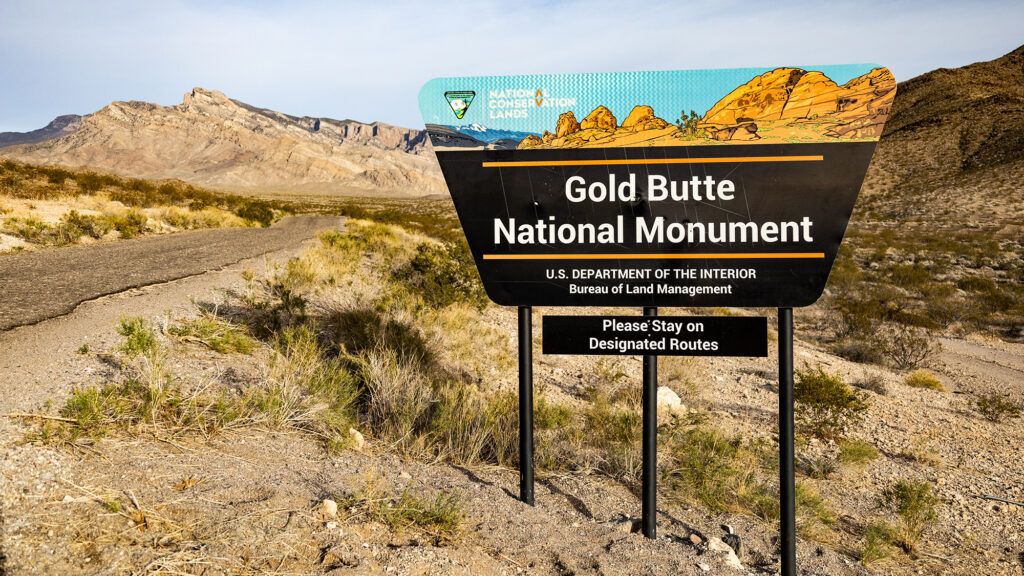
I’d been to Gold Butte National Monument a couple of times for my former career at Travel Nevada—once during a poorly timed July visit when it was 114 degrees the day of my visit, making it impossible to work, or honestly even exist. And another when I was responsible for the welfare of a film crew safely navigating, and getting the shots they needed within the monument. Both times I was of course without my trusted Tacoma, but also without the other half of my peace of mind: the savvy expertise of my husband behind the wheel getting us to our destination. I’d gotten a taste of what awaited at Gold Butte with these quick out-and-back day trips, and wanted to experience it with the vehicle and seasonal timing that lent further exploration much deeper into the monument.
So in the first few days of April, we pointed the tires away from The Biggest Little City, and to one of the only mysterious places in Nevada’s still-wild lower right hand corner. Even though it was snowing all the way across our eastward Highway 50 trek, by the time we reached Mesquite it was sunny and 72—prime weather, and exactly as we’d planned it. With Mesquite in the rearview, we watched the sun drop closer to the western horizon line with each passing Bundy mailbox and ranch gate (yep, those Bundy’s.) Even though it’s only thirty-or-so miles from the turnoff into the monument, to actually reach Gold Butte’s boundary line it sure feels like a lifetime, thanks to a once-paved, now kinda-sorta-maintained asphalt road in. Because what’s worse than a washboarded dirt road? A road that was paved and maintained for a time, but now has bowling ball-sized potholes—some filled in, and some you’ll only discover as you smash right on into them. Even with brand-spankin’-new BFG KO2’s on the truck, a full-size spare, and air compressor in the back, Gold Butte is far beyond the cell phone towers, and a long way from help. A type of road that keeps local search and rescue very busy. So, in an effort to keep the truck (and ourselves!) in one piece, we kept it under 30mph all the way over the boundary line and deep within the monument to our first campsite of the trip: Little Finland.

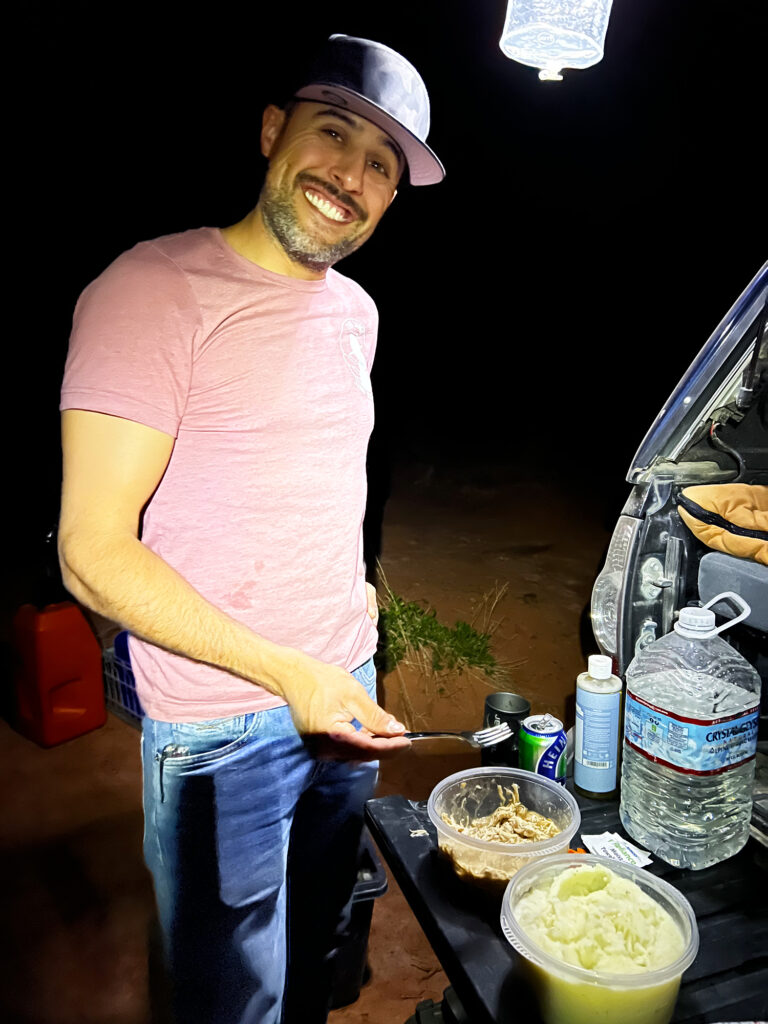
Arriving a very rocky hour later, we discovered only one other camp—two dads and their sons. With hardly any daylight left, we set up camp about a half mile away from them, both of our rigs nestled up against a rocky ledge separating us from Little Finland, made a little dinner and a campfire, tucked Elko into the cab, then climbed into the back of the truck for the night. Even though we arrived at Little Finland when it was almost completely dark my husband knew the unseen parts around us were a powerful thing. But considering this was basically his last unseen section of Nevada, I couldn’t wait for daybreak. I couldn’t wait to see Little Finland through his eyes for the very first time, and at our own take-the-whole-damn-day-if-you-want-to pace.
As soon as the sun was up we realized we left the beigeish yellows behind us, and were now surrounded by coraly crimsons every shade of the spectrum—even the ground’s surface was a soft, powdery brick red sand, and so different from the terrain we were used to up in the high desert. The only thing that contrasted the scarlet world around us were lush palm trees—and a lot of them—lining the base of the ledge Little Finland rests upon. I remember from a work visit with the BLM that they mentioned these of course were non-native to the area, and at some point going to be removed entirely. But the one thing we didn’t consider when selecting our camp-anywhere public lands primitive campsite for the night was why so many palms were growing there.
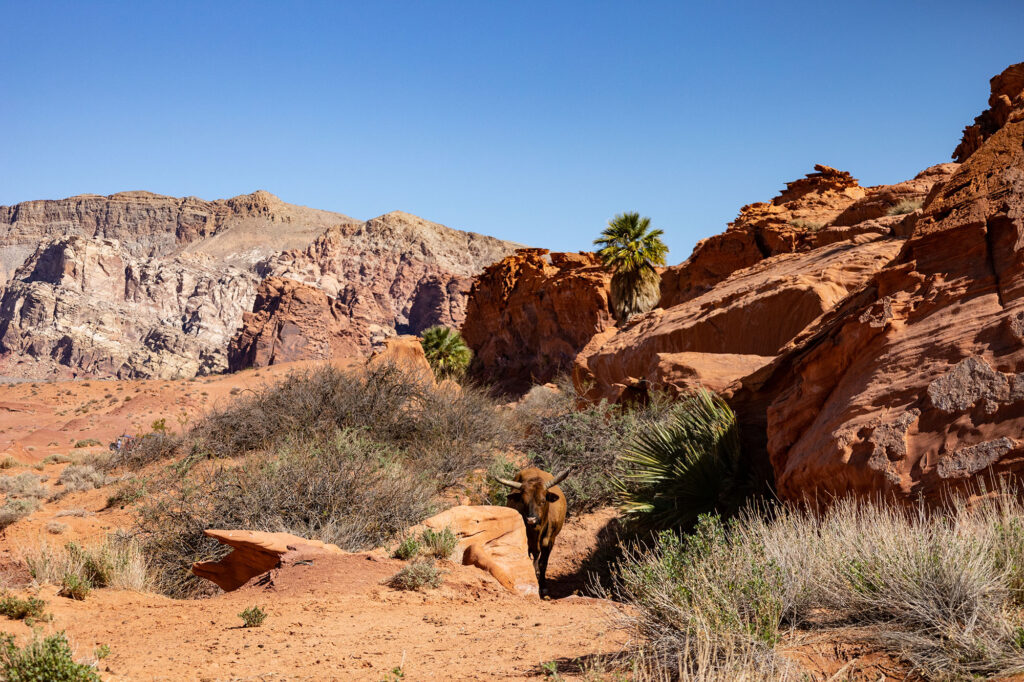
And almost as fast as we realized we were camping on a watering hole in an otherwise very dry climate, Elko alerted us to the massive bull that crept up on us and was silently alternating between staring at us and drawing long slow drinks from about 100 feet away. Then a wild burro appeared in a far less stoic way, yelling at us to get the hell out of there. I glanced over to the other folks camping in the area to see their kids—dressed in matching red junior ranger t-shirts, by the way— notice the outta-nowhere wildlife, then run back to their camp. Note to self: don’t accidentally camp on the only life source in the monument, got it.

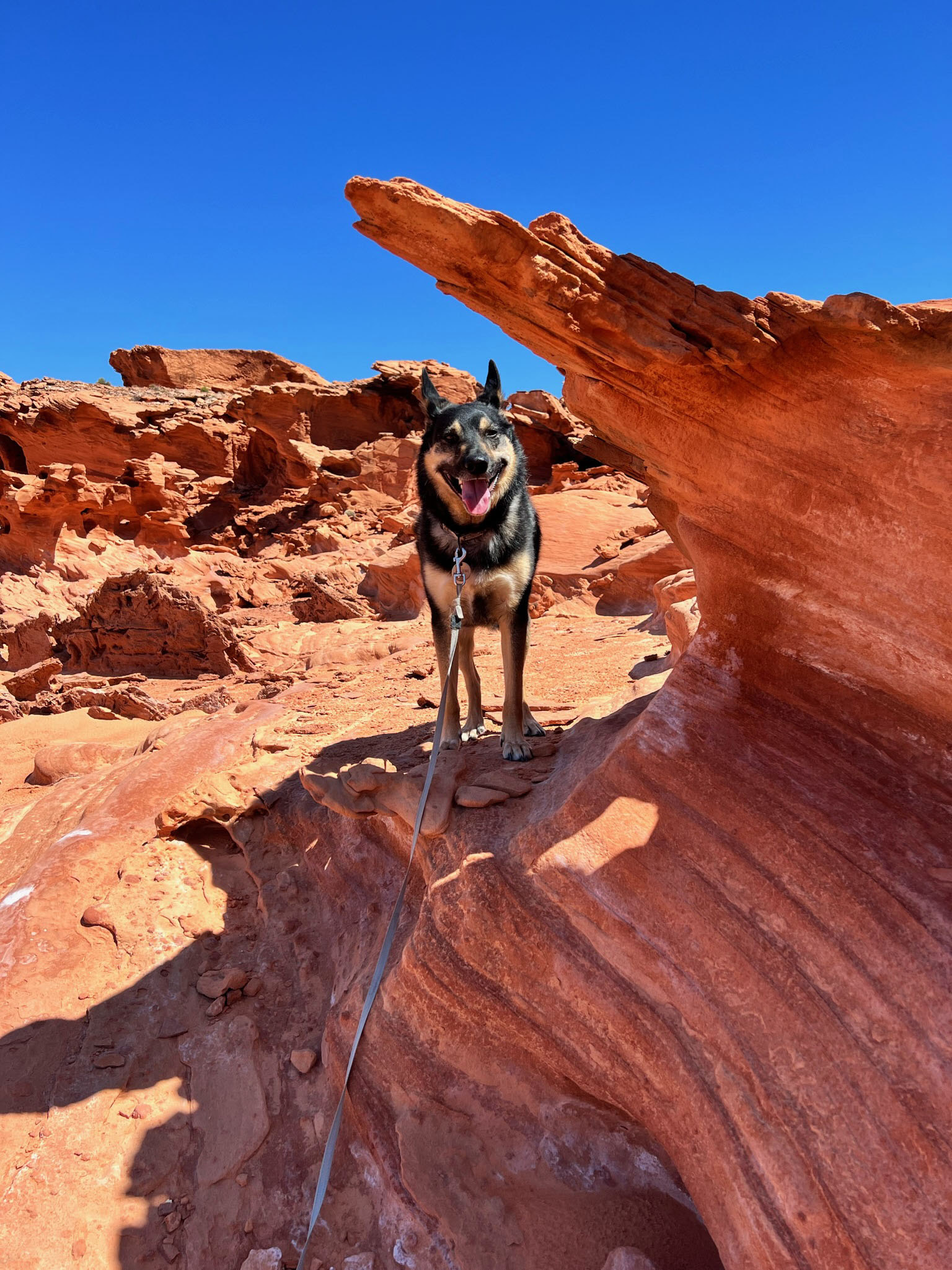

A few side-by-side day trippers had driven by our camp as we had our morning coffee, but otherwise? There was not a single soul in Little Finland as we climbed up the 30 foot ledge and into the core of Little Finland. Essentially a 200 million year-old sandstorm frozen in time, Little Finland is believed to be the missing chunk of strata from the Grand Canyon, and earned its moniker from all the wind-whipped erosional fin formations found within.
Like Valley of Fire on steroids the place is nothing short of a geologic miracle, with house-sized boulders formations carefully teetering over Swiss-cheese pocked formations that really do look like ancient sand dunes frozen in time. Just across Lake Mead and at the actual Valley of Fire, millions of visitors surely swarmed similar, yet less magnificent formations, while we had the entire place to ourselves. We took our time and hundreds of photos before temps started to swell to a degree too hot for a black dog to be in direct sunlight, and climbed back down to the truck.
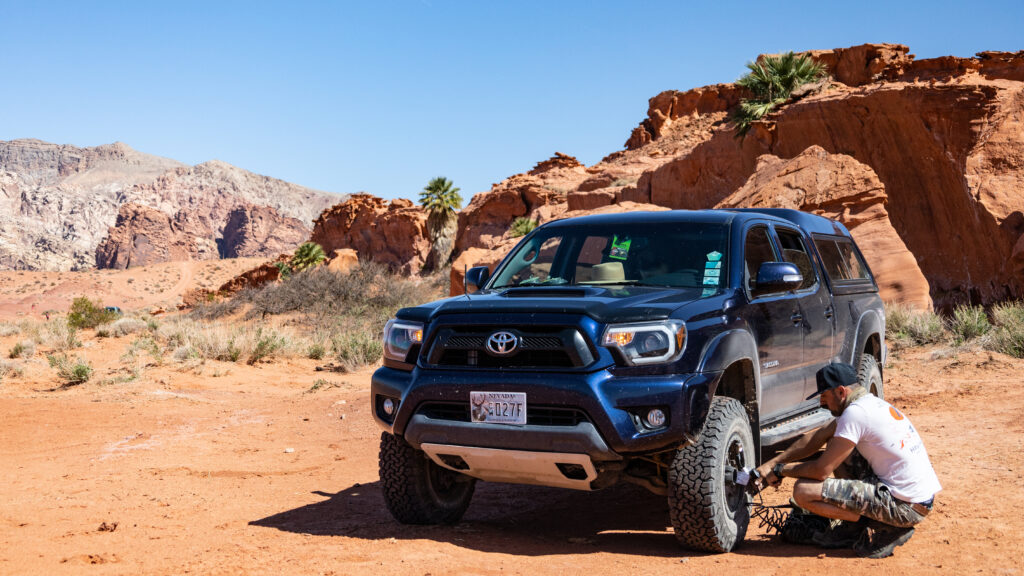
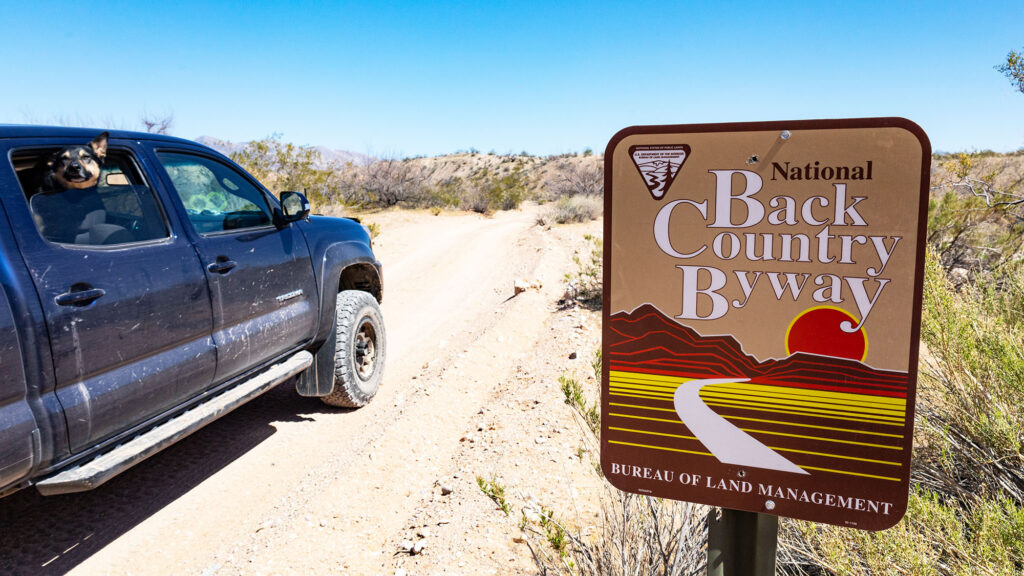
Facing the road so bad it takes at least a whole year to forget about it, we decided to air down the tires for a more comfortable ride out, and hot damn, it worked. On the slow crawl out, we decided to pull over for a tailgate lunch at an outcropping of rocks along Mud Wash. Forgetting Gold Butte is the type of place where you can literally pull the truck over anywhere and find something incredible to remark about—at this particular spot, it was shaded, 30 foot red sandstone rock formations with a petroglyph-etched black desert varnish. We scarfed down some Frank’s Red Hot Sauce-covered mac n’ cheese, a few handfuls of trail mix and gummy bears, admired the ancient history before us, then jumped back on the Gold Butte Backcountry Byway en route to Whitney Pocket.
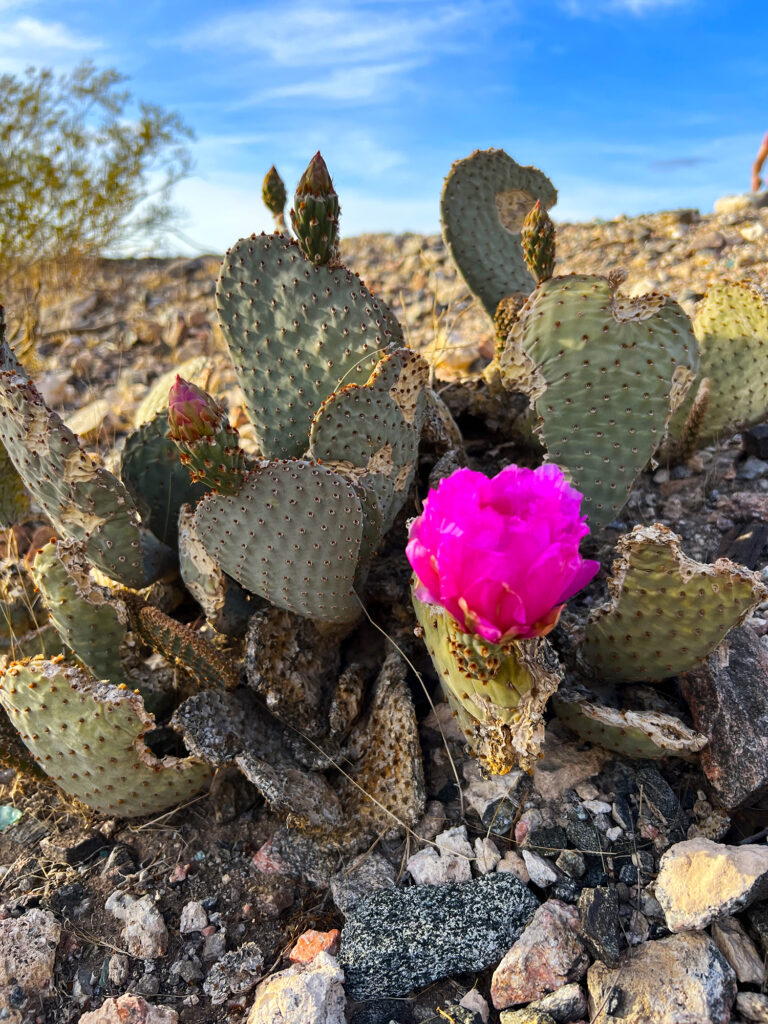
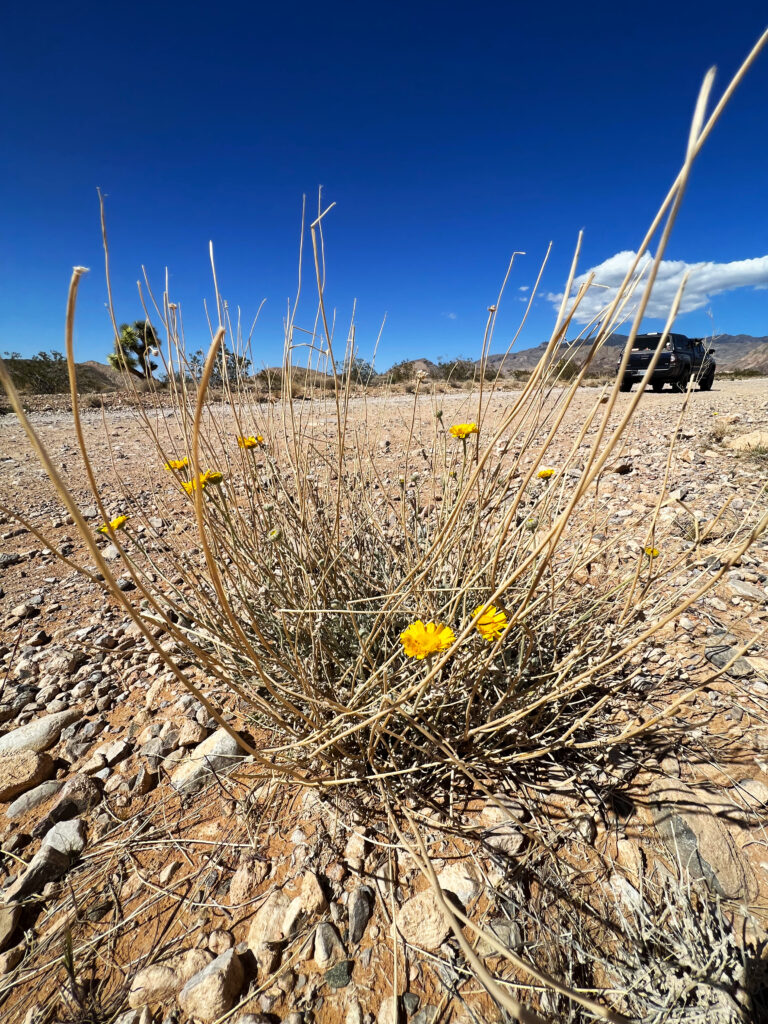
It’s beautiful countryside, but basically feels like you’re in a non-stop, hour-long car accident as you crawl over a painfully rocky road—the exact type of off-roading excursion where as soon as you crack a drink, all carbonation leaves with it in an instant. The good news is this: literally everywhere you look there’s a reason to pull over, get out, and have a look. And in early April, the desert wildflowers were in full bloom, lining the road in both directions like something right out of a dream. It’s a type of low desert allure we aren’t rewarded with all too often up north, and it was so great to have the extra time to pull over whenever we wanted, for as long as we wanted.
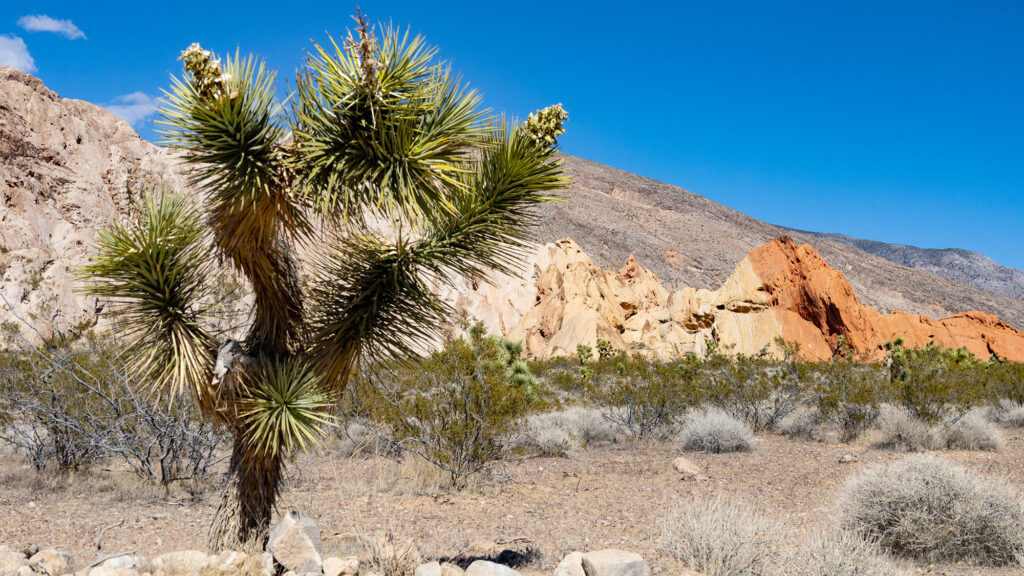
Whitney Pocket. Where my unfailing love for Nevada’s oceans of geologic histories and CCC legacies meet in the middle. The Ancestral Puebloans, or the Nuwuvi people, lived in and around this region, moving from present-day Red Rock, Valley of Fire, the Moapa Valley, Sloan Canyon, and Gold Butte with the seasons. Archaeologists estimate they lived in the area around 3,000 years ago, and there’s not much stronger evidence of their lives than what awaits inside Gold Butte borders. Whitney Pocket is probably the easiest place to experience their presence, with petroglyphs covering just about every rock formation in sight, along with ancient roasting pits and rock shelters.
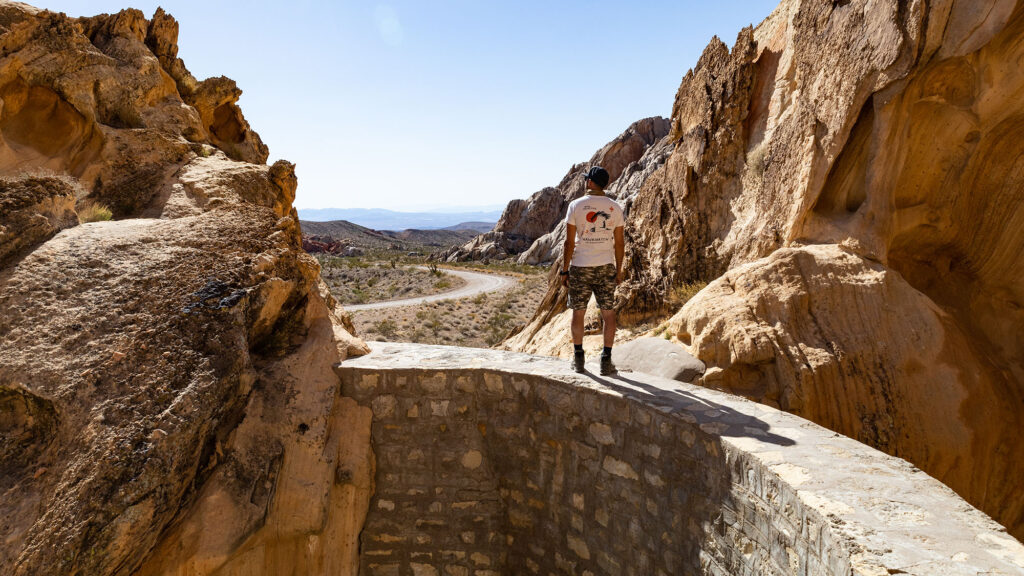
The Civilian Conservation Corps (CCC) was in the area by the 1930s, and along with building Valley of Fire State Park, they did a significant volume of work in what would become Gold Butte, forging the original road, along with a signature stone-masoned dam in Whitney Pocket. We of course pulled over to admire the blooming Joshua Trees, unbelievable geologic mixture of limestone and Aztec sandstone rock formations, Ancestral Puebloan rock shelter-turned CCC storage unit, all the petroglyphs we could, and of course the dam the CCC built nearly 100 years ago.
See what I mean about this place? You could easily spend a week or more at Little Finland and Whitney Pocket, but our time in the monument was quickly winding down and we had one last particular place we wanted to check out—a place I wanted to be sure my husband could see with his own eyes and not rely upon images, or even my own descriptive memories of it. That, and we still weren’t sure exactly where we were camping for the night so, onward. Even though we’d only seen one other group of people at Little Finland, the further we drove back out to the monument border (near Whitney Pocket), the more groups of people we encountered.
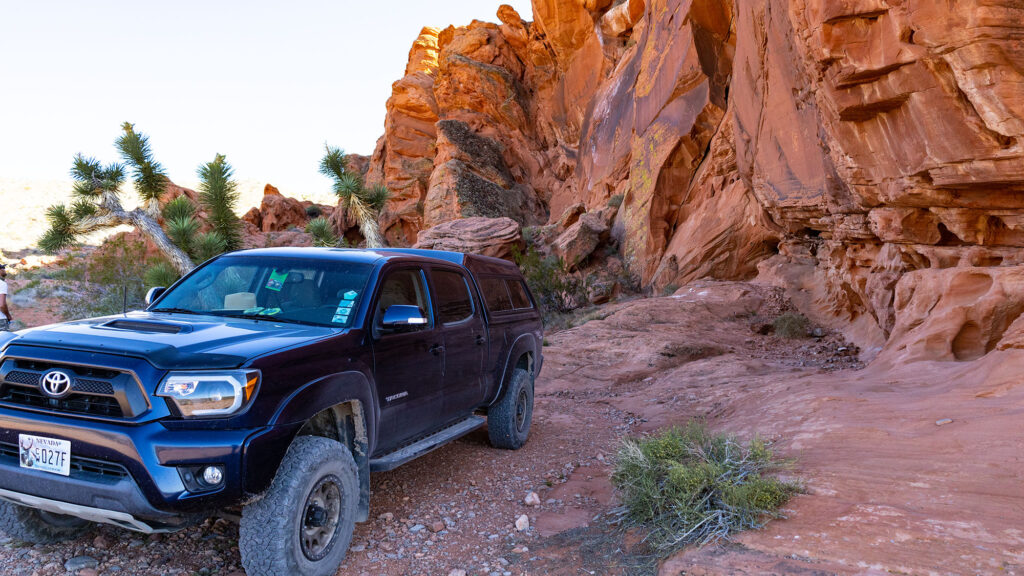
We turned deeper into the monument yet again and spotted another enormous outcropping of red sandstone rocks with no trucks or campers in sight, and excitedly claimed it. We were racing daylight and this wasn’t our final stop for the day, so we unpacked the cooler and a few other small items to claim the spot, and rambled on down a very rocky, primitive road to our destination: a parking area not much larger than a wide spot in the road with a Joshua Tree-lined trailhead leading to another collection of enormous boulders. The three of us hit the trail, a path that I’d navigated before and thankfully knew exactly where to go. Now in peak golden hour, we wiggled through tiny holes in massive rock walls, Elko included, to reach it just in time: a sacred amphitheater with one of the largest (publicly disclosed) petroglyph panels in all of Gold Butte.
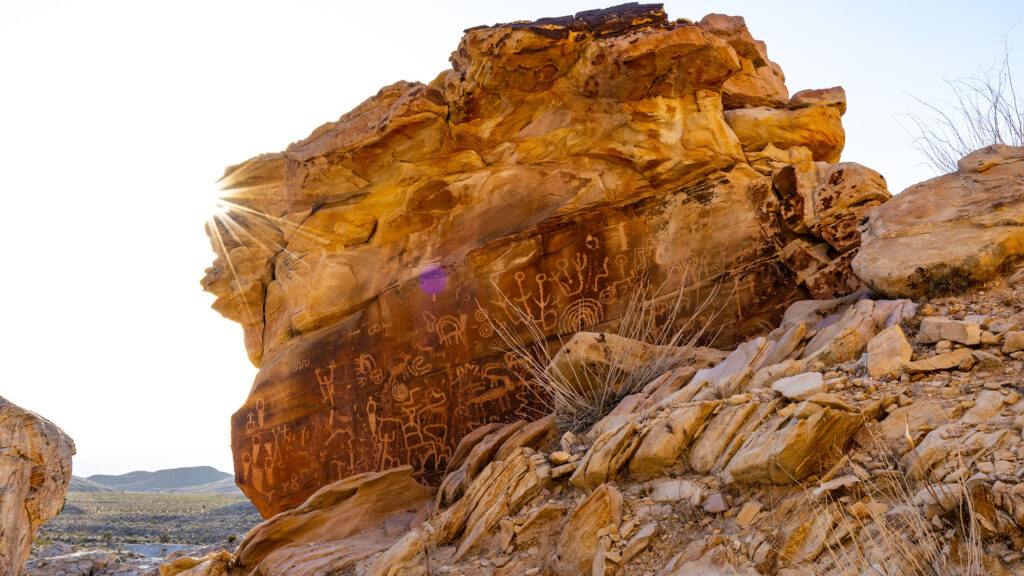
It’s a difficult feeling to articulate, the one where a place just has a presence you can’t ignore, almost like a church. But no matter if you believe, and which religion you follow, this particular space in Gold Butte is a holy one—anyone with blood coursing through their veins can feel it. We stood back, admiring 300 individual illustrations etched into the rock’s surface for at least an hour, until we lost the light. Just the three of us, surrounded by ancient, anthropological power. Like walking around on top of Little Finland, it was similar in the way that we felt like we were breaking some sort of rule just being there, seeing it. And when we got back to our campsite, we agreed it felt the same way—some day when there’s a LEED-certified visitor’s center built in that exact spot, our grandkids would look back at pictures of us camping there, experiencing a national park in its infancy. Back when it was still wild.
That night we busted out the french dip sandwiches with jet boiled au jus, poured a tall camp mug of our favorite drink, fired up the Solo stove beneath that massive red sandstone towering overhead, and settled in for the night. We spent most of the evening talking about all the fires that had likely been built in that exact same spot through the years, while I fiddled with my long exposure camera propped up on the tailgate of the truck.
In my experience, everything truly worthwhile is always complicated, especially when it comes to seeing Nevada wild. Just about anywhere you go in Nevada’s far-flung places is always worth it, but the places that are never easy to reach—the types of places you can’t possibly ever see on the spur of a moment—are what keeps my fire alive. Not just any ol’ place anybody can program into Google Maps and go find, but the dangerously remote locations. A challenge. That was why that weekend at Gold Butte will stick with us now, and in the next life—it was a trip that meant traveling to the opposite side of Nevada during a narrow window of time, with a particular type of truck and camping set up, plus the learned experience of two people who’ve spent a hell of a lot of time primitive camping out in the middle of nowhere, with no access to restrooms or running water, cell service, or anyone else to help out if we get into a jam. Radical self-reliance at its most honest level. And even though there’s a whole hell of a lot of that all around us in northern Nevada, that particular combination of danger factors amid some of Nevada’s most special human and natural histories is rare. I’ve known Nevada is one of the last true frontiers in the country for a long time, but in a place like Gold Butte you can really feel it.
We’d dragged that Tacoma truck camper to all corners of the state (with the pinstripes to prove it), up and down thousands upon thousands of miles of road, sleeping on a mattress-topped piece of plywood for years. It was a game changer for us, being able to have that kind of access—a key to Nevada’s Sagebrush Kingdom that meant being able to wake up on those unmarked parts of the map that’ve always held our attention. We didn’t know it at the time, but that night at our million dollar free campground was the last time we’d sleep in the setup we’d carefully fine-tuned through the years—the venue of our happiest memories. And my god, what a way to go out.
